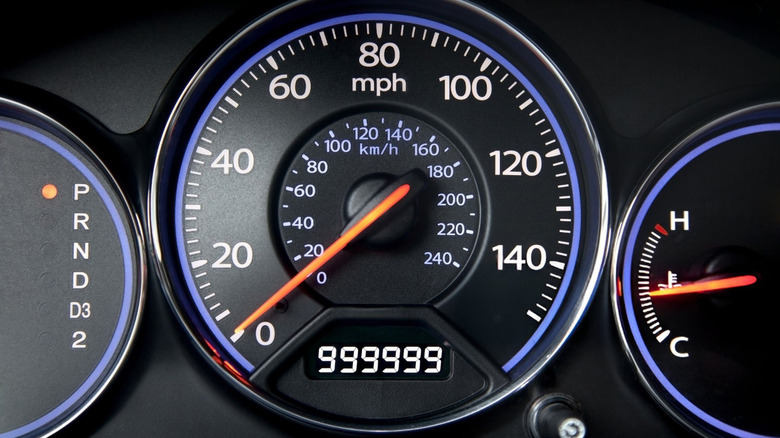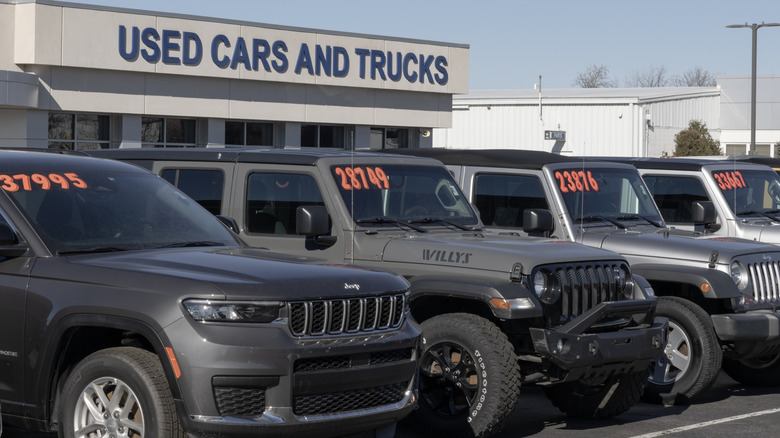What's Considered High Mileage For A Used Car? What To Know Before You Buy
The average mileage covered each year by motorists in the US is about 12,200 miles. So, if you are shopping around for a 10-year-old car, it's logical to assume that most examples on the market will have in the region of 120,000 miles. Anything higher than this could be considered as high mileage, as it's higher than the average. For example, a two-year-old car with 40,000 miles could easily be considered high, whereas an eight-year-old model with the same mileage would be low. It's all relative.
Another way in which to decide whether the mileage is too high or not is by consulting financial or insurance companies. For example, Bank of America will not finance vehicles with more than 125,000 miles, which suggests anything north of that is too high. Mileages north of this would suggest the vehicle will begin to need constant repairs, and so they pose too large a risk to lenders. Experian shares similar stats, claiming that, while some lenders will consider cars with up to 150,000 miles, they will typically raise the APR rate to counter the increased level of risk.
Regardless of a vehicle's age, certain mileages are off-putting to many customers. For example, many people tend to try and find cars with less than 100,000 miles, as they consider anything north of this as too high, and that big bills are almost certainly looming. However, advances in automotive technology mean modern cars are passing this threshold much easier than older cars ever did. So is 100,000 miles even considered high anymore?
Age is just as important as mileage when shopping for a used car
This is why many shoppers now consider the vehicle's age to be just as important as the mileage. Most would prefer to take a 10-year-old vehicle with 110,000 miles on the clock over a 20-year-old car with 100,000 miles, for example. This would be a logical decision as, although the 10-year-old car has traveled further, it's been exposed to the elements for only half the time. After 20 years, it's reasonable to expect rust on the undercarriage and for rubber elements to have dried up.
However, a well-cared-for 20-year-old car with 50,000 miles might be a better option than the higher mileage and newer counterpart, particularly if it's been well-maintained and stored correctly. With only half the mileage, it's reasonable to assume that the drivetrain has more to give than the newer model. This shows why mileage should not be the only factor you take into account when seeking out a reliable car — age is just as important.
In fact, there are many things you need to look out for when buying a used car, and high mileage is just one of them. A continual and comprehensive service record is another, as without this, you have no idea how well the car has been cared for. A higher-mileage car with an impeccable service record might well be the better bet instead of a low-mileage car with a patchy history.

